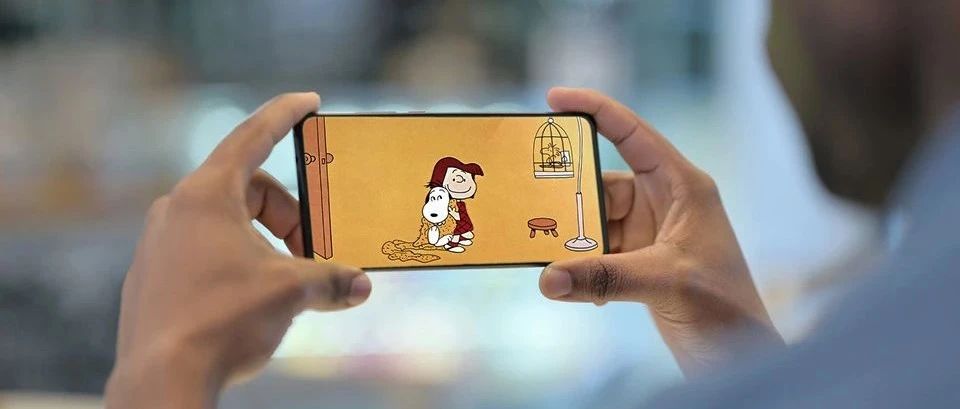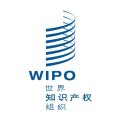
WIPO China: A FRAND in need – why establishing standardized technologies is so complicated
本文于2024年12月9日首发于《WIPO杂志》。作者为产权组织专利和技术法律司司长安德拉什·约库蒂先生。
The article was originally published in the WIPO Magazine on December 9, 2024. The author is András Jókúti, Director, Patent and Technology Law Division, WIPO.

Getty Images/yourstockbank and Peter Horree/Alamy Stock Photo
你还记得《花生》漫画中,克拉拉把史努比拖来拖去,强制给他擦洗,为他穿衣打扮去喝茶,一边唱着“朋友的基本信赖”场景吗?
Do you remember the Peanuts cartoon where Clara drags Snoopy around and, against his will, scrubs him down and dresses him up for tea, all the while singing about “fundamental friend dependability”?
标准必要专利(SEP)界出现了类似的动态——只不过不是关于朋友之间的,而是关于FRAND,即公平、合理和非歧视许可条款的。
The world of standard essential patents (SEPs) features a similar dynamic – only it’s not between friends, it’s about FRANDs: fair, reasonable and non-discriminatory licensing terms.
专利所有人和技术标准(比如5G和Wi-Fi)实施者相互依存。他们分别是许可人和被许可人。但在发生争议时,他们都觉得受到了不公平对待。他们都倾向于认为自己是史努比,并觉得对方的友谊观(或者FRAND观)与自己十分不同。
Patent owners and the implementers of technological standards, such as 5G and Wi-Fi, depend on each other. They are licensors and licensees, respectively. But when it comes to disputes, both can feel mistreated. They each tend to consider themselves Snoopy and feel that their counterpart’s idea of friendship (or FRANDship) is quite different from their own.
标准化是一个具有全球重要性的议题。技术标准对于确保各家公司所提供的不同产品或服务的安全性和互操作性至关重要。换而言之,标准的存在让不同的设备能够一起工作,相互沟通,并连接到第三方设备上,以及在相同的平台上安全运行,而不考虑其型号或品牌。
Standardization is an issue of global importance. Technological standards are critical for ensuring the safety and interoperability of different products or services made available by various companies. In other words, standards allow different devices to work together, communicate with each other and connect to third-party gadgets, as well as to operate safely on the same platforms irrespective of their model or brand.
想一想3G和4G等不同代的蜂窝技术。试想一下像蓝牙、USB和Wi-Fi这样的主要连通标准。如果没有那些标准,制造商如何能够确保我们的智能手机和其他设备在相同的网络上运行或彼此同步运行?
Think about the different generations of cellular technology such as 3G and 4G. Consider the key connectivity standards, like Bluetooth, USB and Wi-Fi. Without those standards, how could manufacturers ensure that our smartphones and other devices operate on the same networks or function in sync with one another?
在这些标准化平台中,每个平台都代表着技术融合的一项巨大成就。而要确保这些成就需要大量的知识产权(IP)交易。事实上,可能看似单一的标准实际上包含一系列广泛的专利和利益攸关方。我们稍后再回到史努比的话题上。现在,咱们来讲一讲SEP的生命周期。
Each of those standardized platforms is an enormous achievement of technological convergence. And ensuring such achievements requires a great number of intellectual property (IP) transactions. In fact, what may appear as single standards actually comprise a broad range of patents and stakeholders. We’ll return to Snoopy later. Right now, let’s enter the SEP lifecycle.
✦
•
✦

TCD/Prod.DB/Alamy Stock Photo
第1阶段:标准化
Phase 1: standardization
标准制定组织使其成员能够一起制定标准,并商定他们的技术规范。此等环境为全球相关标准的快速发展提供了支持。随着这类标准的制定,消费者不必担心自己的设备不能按照基本的要求运行或者无法协同工作。
Standard-setting organizations enable their members to develop standards together and agree on their technical specifications. Such environments support the rapid development of globally relevant standards. And with such standards in place, consumers don’t need to worry that their devices won’t perform in line with basic requirements or that they won’t work together.
所有这些通过使消费者能够根据基本功能和兼容性以外的因素(比如价格、附加功能或设计)做出购买决定,为竞争性市场的形成奠定了基础。从这个角度来看,标准化机构竞争对手之间的合作可视为一个成功的故事,由此产生了高度的创新和有史以来采用最广泛的一些技术。
All this lays the foundation for a competitive market by enabling consumers to base purchasing decisions on factors other than basic functionalities and compatibility, such as price, additional features or design. From this perspective, the collaboration of competitors at standardization bodies can be seen as a success story, which has led to a high degree of innovation and some of the most widely adopted technologies ever.
以视频压缩和连通标准为例。我们在使用MPEG标准的高清电视上看电影,并通过蓝牙实现智能手机与汽车的连接。与此同时,5G蜂窝网络继续在从航空到医疗技术等行业创造新的机会,并为一系列产品赋能,包括实时虚拟和增强现实以及机器对机器通信。更多的产品意味着更多的实施者,并因而产生更多潜在的SEP被许可人。
Take, for example, video compression and connectivity standards. We watch movies on high-definition TVs that use an MPEG standard and connect our smartphones to our cars via Bluetooth. Meanwhile, 5G cellular networks continue to create new opportunities in industries from aviation to medical technology, as well as enable an array of products, including real-time virtual and augmented reality and machine-to-machine communications. More products mean more implementers and, as a result, more potential SEP licensees.
然而,制定标准本身也存在一系列挑战。行业参与者建议纳入其在自己的车间和实验室里开发出来的解决方案。他们顺理成章地获得了这些解决方案的IP权利,并期望得到投资回报。举例说明:致力于移动宽带标准的组织合作伙伴(1998年从3G开始,统称为3GPP)去年承诺开发6G标准。专利提供者已经在提交专利申请,要求对其研究团队提出的平台元素拥有所有权。
Yet setting standards comes with its own set of challenges. Industry players propose to include solutions developed in their own workshops and labs. Naturally, they obtain IP rights to them and expect a return on their investment. To illustrate: the organizational partners working on mobile broadband standards (starting with 3G in 1998, jointly called 3GPP) committed last year to develop the 6G standard. The contributors are already filing patent applications to claim dibs on the elements of the platform that their research teams have come up with.
SEP保护需要实施技术标准的各项发明。因此,如果你发布了一项符合标准的产品,你将不可避免地必须使用其他人拥有专利的技术,对此你将需要获得许可。这便开始了第二个阶段。
SEPs protect inventions that are required to implement technology standards. So, if you launch a standard-compliant product, you will inevitably have to use technology that is patented by others, for which you’ll need a license. This is where the second phase begins.
第2阶段:许可
Phase 2: licensing
一旦最终制定并推出一项技术标准,打算实施标准的产品开发者就必须寻求获得受保护技术的使用授权。这便远远超出了智能手机制造商的范畴。例如,如果你生产蓝牙耳机或生产通过Wi-Fi连接的测量用电量的智能电表,你就必须许可相关的SEP组合。
Once a technological standard is finalized and rolled out, the product developers planning to implement it must seek authorization to use the protected tech. That goes far beyond smartphone manufacturers. For instance, if you produce Bluetooth-enabled headphones or a smart meter that measures electricity consumption via a Wi-Fi connection, you must license the relevant SEP portfolios.
然而,这里存在一种内在的冲突。标准的成功取决于于其广泛的采用,而专利制度的建立是为了奖励创新。因此,一方面,标准化技术正在提供给实施者;另一方面,经济奖励则给予持有专利的人。简而言之:SEP持有人想从使用其技术的人那里得到使用费,而产品制造商希望支付尽可能少的费用并避免诉讼。
However, there is an inherent friction here. The success of standards depends on their broad adoption, whereas the patent system is set up to reward innovation. So, on the one hand, standardized technology is being made available to implementers; on the other, economic incentives are being directed at those who hold the patents. Simply put: SEP holders want royalties from those who use their tech, while product manufacturers want to pay as little as possible and steer free of litigation.
而且,单一的一项标准可能包含多个标准必要专利——有时甚至数百数千个。这些专利并非由单独一家实体而是许多家公司所有。因此,标准必要专利的商业许可条款成为一个敏感的问题不足为奇。如果支付给专利权人的使用费太高,就会使生产成本过高,而与此同时,创新者需要获得公平的收入,以使他们的研发工作值得去做。那么,有什么解决方案吗?
What’s more, one single standard may encompass multiple SEPs – sometimes hundreds or even thousands. Those patents are not owned by a single entity but by many companies. It comes as no surprise, then, that the terms of commercial SEP licenses are a sensitive issue. If the royalties due to the patentees were too high, it would make production too costly, but at the same time innovators need fair revenue to make R&D worth their while. So, what’s the solution?
完善的许可制度对于在专利持有人和专利实施者间取得适当的利益平衡至关重要。因此,大多数标准化机构的知识产权政策要求专利提供者声明其愿意在公平、合理和非歧视的条款(FRAND承诺)下许可他们的标准必要专利。一些组织甚至要求逐项列出其所有人认为对其标准至关重要的专利。
Solid licensing systems are essential in striking the right balance between the interests of patent holders and those of implementers. That is why the IP policies of most standardization bodies require contributors to declare that they are willing to license their SEPs under fair, reasonable and non-discriminatory terms – the FRAND commitment. Some organizations even require an itemized list of the patents their owners consider essential to their standard.
由于任何部署符合标准的产品的人都要使用专有技术,因此获得能够负担得起的许可是人们的期望。在这里,必须认真权衡SEP持有人和标准实施者的合法利益——同时明白双方可以而且经常同时扮演两种角色,既作为某些专利的许可人,又作为其他专利的被许可人。
Because proprietary technology is used by anyone who deploys standard-compliant products, there is an expectation that licenses will be available and affordable. Here, the legitimate interests of SEP holders and standard implementers must be carefully weighed against one another – with the understanding that both parties can, and often do, undertake both roles simultaneously, as licensors of some patents and licensees of others.
但是,FRAND承诺的执行,以及确定这些术语的实际含义,都不在标准化机构的权限之内。而且,公司通常会在最终确定标准之前自行宣布大型组合为SEP。系统内的不确定性,加上缺乏对真正必要性的权威评估,导致在实施标准时哪些知识产权必须真正获得许可的透明度有限。
But the enforcement of FRAND undertakings, as well as determining what such terms actually mean, fall outside the purview of standardization bodies. Moreover, companies usually self-declare large portfolios as SEPs, often before the standard is finalized. That uncertainty in the system, coupled with the lack of an authoritative assessment of true essentiality, results in limited transparency regarding precisely which IP rights must really be licensed when implementing a standard.
同样显而易见的是,FRAND承诺所带来的影响在各个司法管辖区的解释不尽相同——甚至用于计算特许权使用费的方法也因地区而异。因此,许可谈判可能会充满冲突,或者至少对涵盖SEP所有人组合中所有专利的全球许可而言,在什么是公平合理的看法上存在分歧。
It is also apparent that the implications of FRAND commitments are not interpreted on equal terms across jurisdictions – even the methods used to calculate royalties differ from region to region. Therefore, licensing negotiations can be fraught with conflict – or at least diverging views on what is fair and reasonable for a global license covering all the patents in the SEP owner’s portfolio.
如果双方未能达成一致,则会导致进入第三个阶段。而这就是克拉拉和史努比开始狂舞的阶段。
Failure by the parties to agree can lead to a third phase. And this is where Clara and Snoopy begin their frantic dance.

Universal Images Group North America LLC/Alamy Stock Photo
第3阶段:争议
Phase 3: disputes
在有争议的SEP许可案件(以及由此引起的诉讼)中,每一方都会提及自己报价的公平、合理和非歧视性(以及对方报价的不公平、合理和非歧视性),对SEP的必要性或有效性提出异议,质疑合作伙伴的善意,并通常声称自己是温顺的小狗,却沦为冷漠的克拉拉的虐待对象。结果如何呢?由此产生了大量的争论和天价交易费。
In contentious SEP licensing cases – and consequently in litigation – each party invokes the FRANDly nature of their offer (and the unFRANDliness of the other’s), challenges the essentiality or validity of the SEPs, contests the good faith of its partners, and generally claims that it is the meek puppy falling victim to the abusive conduct of an uncaring Clara. The results? Much debate and sky-high transaction costs.
实施者担心受到用以收取超出FRAND原则的专利使用费的禁令威胁,而SEP所有人则抱怨实施者未经许可使用其专利技术,并试图不支付公平的许可费。
Implementers fear the threat of injunctions used to extract supra-FRAND royalties, while SEP owners bemoan the implementers’ unlicensed use of their patented tech and their attempts to avoid paying fair license fees.
风险远非微不足道的。整个市场的准入会受到一纸禁令的阻碍,鉴于各项标准的广泛采用,即使每个产品一分钱也会带来巨大的利润或损失——毫无疑问,即使是适当的使用费基数也会引发激烈的争论。试想一下智能手机或汽车部门的规模,你便会一目了然。实际上,FRAND许可费用是基于最小的可销售专利组件(比如微芯片)还是基于产品本身(如一辆小汽车),这在实际操作上存在巨大差异。
The stakes are far from peanuts. Access to entire markets can be blocked by an injunction and, given the widespread adoption of standards, even one cent per product can result in huge gains or losses – it is no wonder that even adequate royalty bases are hotly debated. Consider the magnitude of the smartphone or automotive sectors and you will get the idea. Indeed, it makes a huge practical difference whether the FRAND license fee is based on the smallest salable patented component (such as a microchip) or the product itself (like a car).
更为复杂的是,价值链(和市场)的全球化导致了全球许可需求和跨境纠纷,而数字经济中以前单独的行业部门的融合则引发了进一步的问题。例如,信息和通信技术(ICT)部门内的做法,在涉及到汽车制造商等连通性领域的新参与者时,可能会受到争议。
To make things more complex, the globalization of value chains – and markets – results in global licensing needs and cross-border disputes, while the convergence of previously separate industry segments in a digital economy causes further problems. For example, practices that worked within the information and communications technology (ICT) sector may be disputed when it comes to new players in the connectivity arena, such as car makers.
重新制定FRAND
Making FRANDs again
当对立的双方——双方都感觉像史努比和克拉拉一样——无法统一立场时,两件事现在可以减轻SEP许可的一些痛苦。
When opposing parties – who both feel like Snoopy and Clara – cannot align their positions, two things can currently alleviate some of the pain of SEP licensing.
首先,对于愿意将其异议提交给此类程序的各方,世界知识产权组织(产权组织)提供了多种替代性争议解决办法 (ADR)。
First, for parties willing to submit their differences to such procedures, the World Intellectual Property Organization (WIPO), among others, offers multiple means of alternative dispute resolution (ADR).
其次,基于市场的解决方案不断涌现,为使用案例提供了一站式服务,从而可为捆绑式SEP组合提供明确的许可费用。这可极大地简化交易。如果足够多的SEP所有人加入专利池,专利池就可以让竞争激烈的市场冷静下来,而技术用户通常会接受所提供的条款,以换取安心。
Second, market-based solutions are emerging with one-stop shops for use cases that offer clear license fees for bundled SEP portfolios. That can simplify transactions dramatically. Patent pools can cool down competitive markets if enough SEP owners join them, while technology users often accept the terms offered in exchange for peace of mind.
具有许多SEP纠纷的司法管辖区正在探索政策方案或法律方案。鉴于至今缺少行之有效的政府干预措施,许多利益攸关方更愿意采用基于市场的方法,而政策举措和磋商可以激发讨论。提高SEP状况的透明度至少对于市场参与者而言至关重要。
Jurisdictions with many SEP disputes are exploring policy or legislative options. Given the absence thus far of proven governmental interventions, many stakeholders prefer a market-based approach, but policy initiatives and consultations can invigorate the discourse. As a bare minimum, increasing transparency in the SEP landscape is vital for market participants.
考虑到上述挑战,似乎愈发需要在国际一级提供信息、指导、讨论和服务。鉴于标准化技术实施和SEP许可具有跨境性质,产权组织等中立的全球性组织可以补充该领域的国家和地区政策。
Considering the above challenges, there appears to be a growing need for information, guidance, discussion and services at the international level. Given the cross-border nature of the implementation of standardized technologies and of SEP licensing, neutral global organizations such as WIPO can complement national and regional policies in this area.
最近,产权组织发布了为期三年的SEP战略。该战略确定了其将与广泛的利益攸关方进行合作的四组举措,其中包括:提供全球对话平台;担当知识和数据中心;不仅作为替代性争议解决的场所,而且还作为交易便利化的中心;向相关的利益攸关方提供可以直接访问的服务。
WIPO recently published its three-year SEP Strategy. It identifies four clusters of initiatives on which it will undertake to work with a wide range of stakeholders. They include providing a platform for global dialogue; serving as a hub for knowledge and data; being a venue not only for ADR but also for deal facilitation; and providing services directly accessible to the relevant stakeholders.
史努比和克拉拉将何去何从?“FRAND的基本信赖”可能根本不是一个如此空洞的词语。行业参与者确实相互依存,通过以创新为基础的标准化来兑现有利于消费者的承诺。政策制定者和政府间组织应该营造一种每个人都想去而非被迫跳舞(或喝茶)的氛围。
Where does this leave Snoopy and Clara? Well, “fundamental FRAND dependability” may not be such a hollow term after all. Industry players do depend on each other to deliver on the promise of consumer benefit via innovation-based standardization. It is up to policymakers, alongside intergovernmental organizations, to foster an environment in which everyone can dance (or have tea) because they want to, not because they’ve been dragged along.

TCD/Prod.DB/Alamy Stock Photo
在线阅读全文,进一步了解标准必要专利。
Read the full article online and learn more about standard essential patents.

✦
•
✦
欢迎扫描下列二维码进行WIPO杂志订阅
Scan the QR code below to subscribe to WIPO Magazine!

订阅步骤:
Simply follow these steps:
1. 在第一步中选择”WIPO杂志“;
Select “WIPO Magazine” in the step 1;
2. 在第二步中填写必填项信息;
Fill in the required information in the step 2;
3. 根据个人邮箱收到的验证邮件进行确认;
Confirm your subscription by clicking the verification link in the email sent to your inbox.
订阅成功,阅读愉快!
That’s it! You’re now subscribed to WIPO Magazine. Enjoy your reading!
点击阅读原文查看关于WIPO中国办事处的更多信息。
Click on Read more for more information about the WIPO Office in China.

本篇文章来源于微信公众号: WIPO中国 ,如有侵权请即使联系进行删除







